I. Design Principles: Building a Harmonious Symbiosis of Light and Nature
1.1 Principle of Thematic Unity
Lighting design must first establish a core theme for the garden. Whether aiming for the serenity of a Jiangnan-style courtyard or the minimalism of a modern landscape, the theme dictates fixture selection and layout. For example, traditional Chinese gardens may use lantern-style fixtures with lattice patterns, while contemporary designs favor geometric LED fixtures. Color temperature alignment is critical: warm white (2700-3000K) creates intimacy, while cool white (4000-5000K) suits modern aesthetics.
1.2 Ecological Sustainability Principles
l Light Pollution Control: Fixtures must have ≥30° shielding angles to minimize skyglow. Ground recessed lights require anti-glare designs with 15°-30° beam angles.
l Energy Efficiency: Prioritize LEDs with ≥100lm/W efficacy. Solar-powered systems need ≥2 hours daily sunlight exposure for basic functionality.
l Plant-Friendly Design: Tree uplighters (10-15m height) use 200W narrow-beam fixtures (15°) for canopy emphasis, while shrubs benefit from 50W floodlights (60°) at 0.8-1.2m height .
1.3 Hierarchical Lighting Principles
Create spatial depth through primary-secondary lighting:
l Primary Lighting: Path lights (150-200lx) ensure safety
l Secondary Lighting: Garden lights (50-80lx) outline features
l Accent Lighting: Ground lights (10-20lx) highlight key plants
Example: In Japanese gardens, stone lanterns (10lx) and bamboo tube lights (30lx) create Zen-inspired light-dark contrasts .
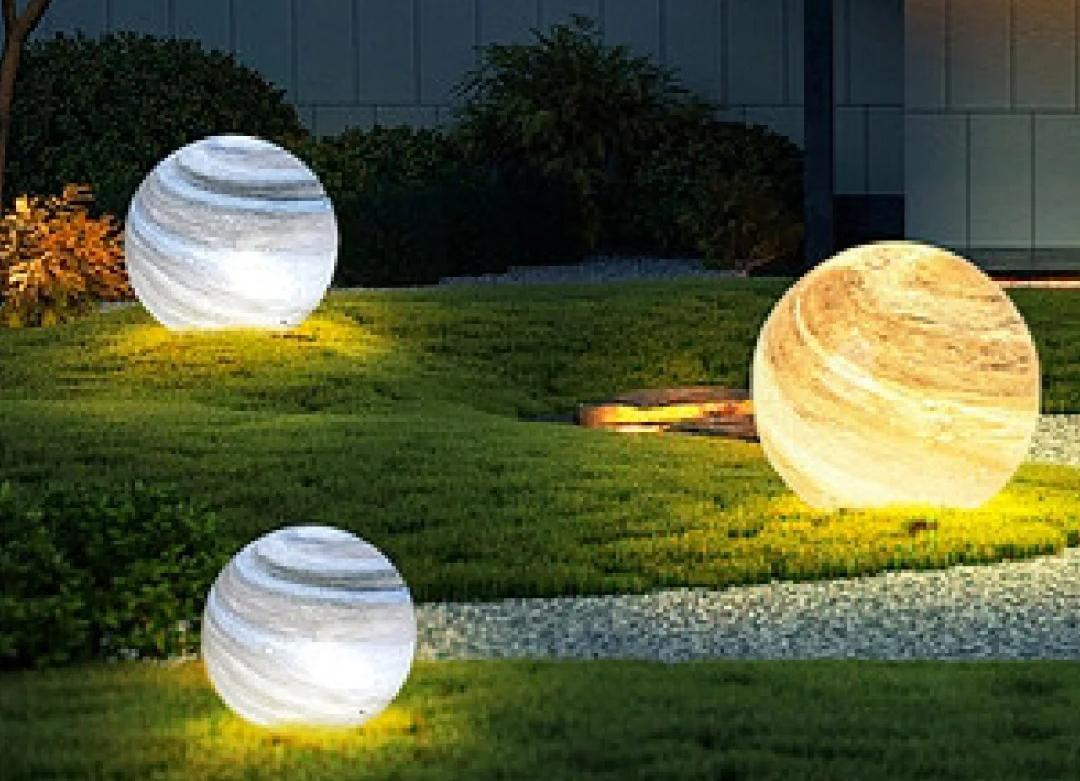
II. Fixture Types & Scene-Specific Applications
2.1 Functional Lighting Systems
l Path Lights: 3-4m poles with IP65 rating, 120° beam angles. Motion sensors activate lights at 1.5m range (0.5s delay).
l Courtyard Lights: Design mirrors architectural styles (e.g., bronze for New Chinese, wrought iron for Mediterranean). Mount at 2.5-3m with 85° elevation for optimal spread .
l Step Lights: Embedded LED strips (2700K) with anti-slip textures. Sloped paths require double illumination of regular steps.
2.2 Decorative Lighting Systems
l Tree Uplighters:
Tall Trees: 10-15m height → 200W narrow-beam (15°) at 45° elevation
Dense Canopies: Bind fixtures to branches for upward illumination
l Water Feature Lights:
Static Pools: 3000K LED wash lights with 200lx edge → 50lx center gradient
Dynamic Water: Waterproof RGBW strips (DMX512 control) for color-changing effects .
l Artistic Fixtures: Fiber-optic trees (200-500 fibers/plant) or projection systems (1920×1080 resolution) for seasonal motifs.
2.3 Smart Control Systems
Integrate "Light-Time-Human"interaction:
l Time Modes: Day (18:00-22:00 full), Night (22:00-23:00 50%), Midnight (23:00+ pathway only)
l Occupancy Sensing: Microwave radar detects 5-8m range with <0.5s response
l Scene Presets: Party mode (2700K + dynamic shadows), Meditation mode (4000K + soft glow) .
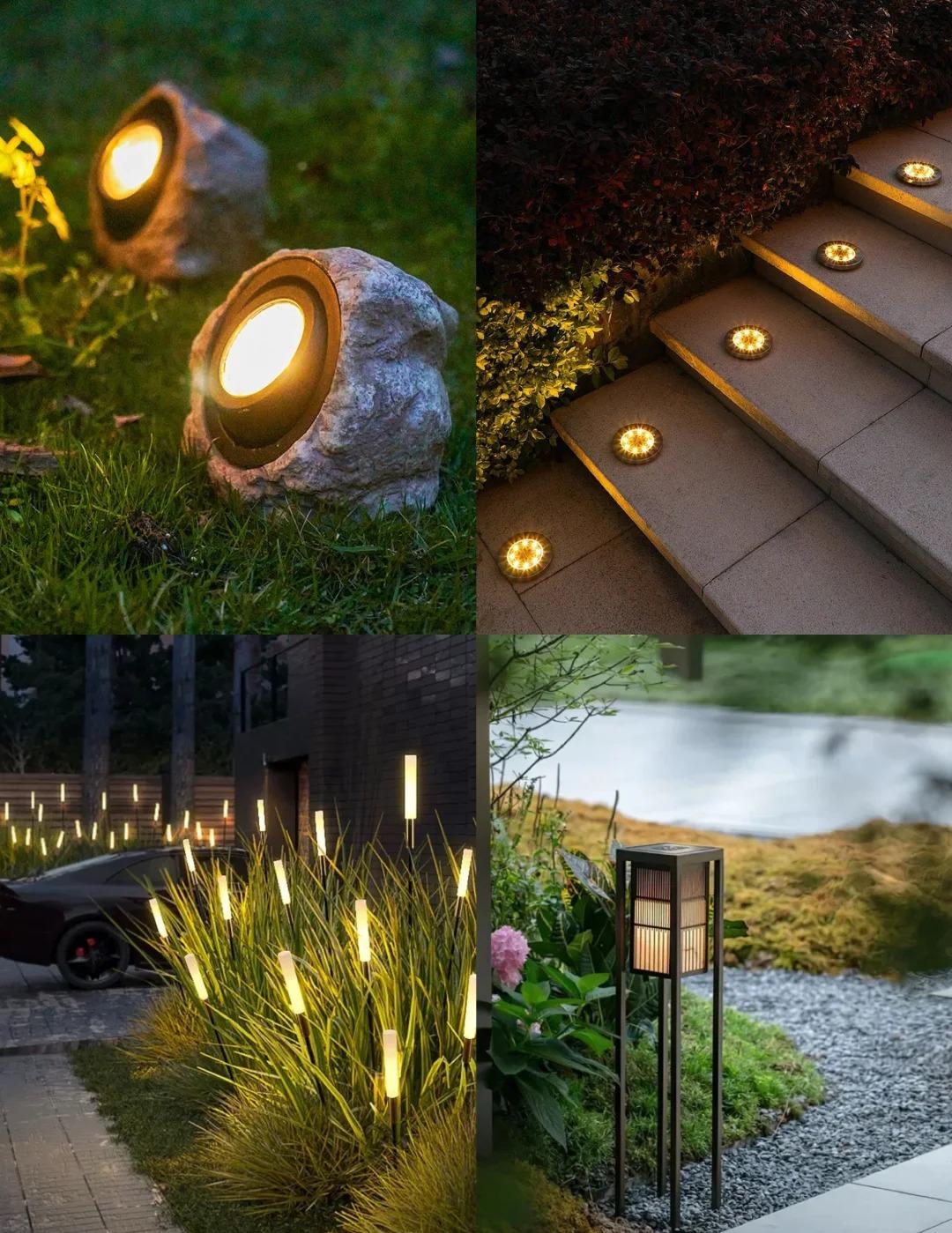
III. Spatial Layout Golden Rules
3.1 Path Lighting Design
l Main Avenues: Symmetrical bilateral placement (8-10m spacing), fixture ≤3:1 height-to-spacing ratio
l Curved Paths: "Zigzag" layouts with focal lights every 5m (30% higher intensity)
l Stairs: 0.3m wide LED strips with 300lx→100lx gradient .
3.2 Functional Zoning Strategies
Area | Illuminance (lx) | CRI (Ra) | CCT (K) | Fixture Examples |
Entrance | 200-250 | Ra≥80 | 2800-3000 | Stone lanterns + ground contour lights |
Seating Zones | 80-120 | Ra≥70 | 2200-2500 | Iron lanterns + floor-standing lamps |
Waterfront | 50-80 | Ra≥90 | 3000-3500 | Waterproof wash lights + LED strips |
Plant Zones | 30-50 | Ra≥65 | 2000-2200 | Narrow-beam uplights + fiber optics |
3.3 Visual Safety Design
l Glare Control: ≥30° shielding, ≤2000cd max luminous intensity at 2.5m height
l Electrical Safety: IP66 rating, <4Ω grounding resistance
l Anti-Vandalism: ≥500kg concrete bases with 0.5×0.5m counterweights .
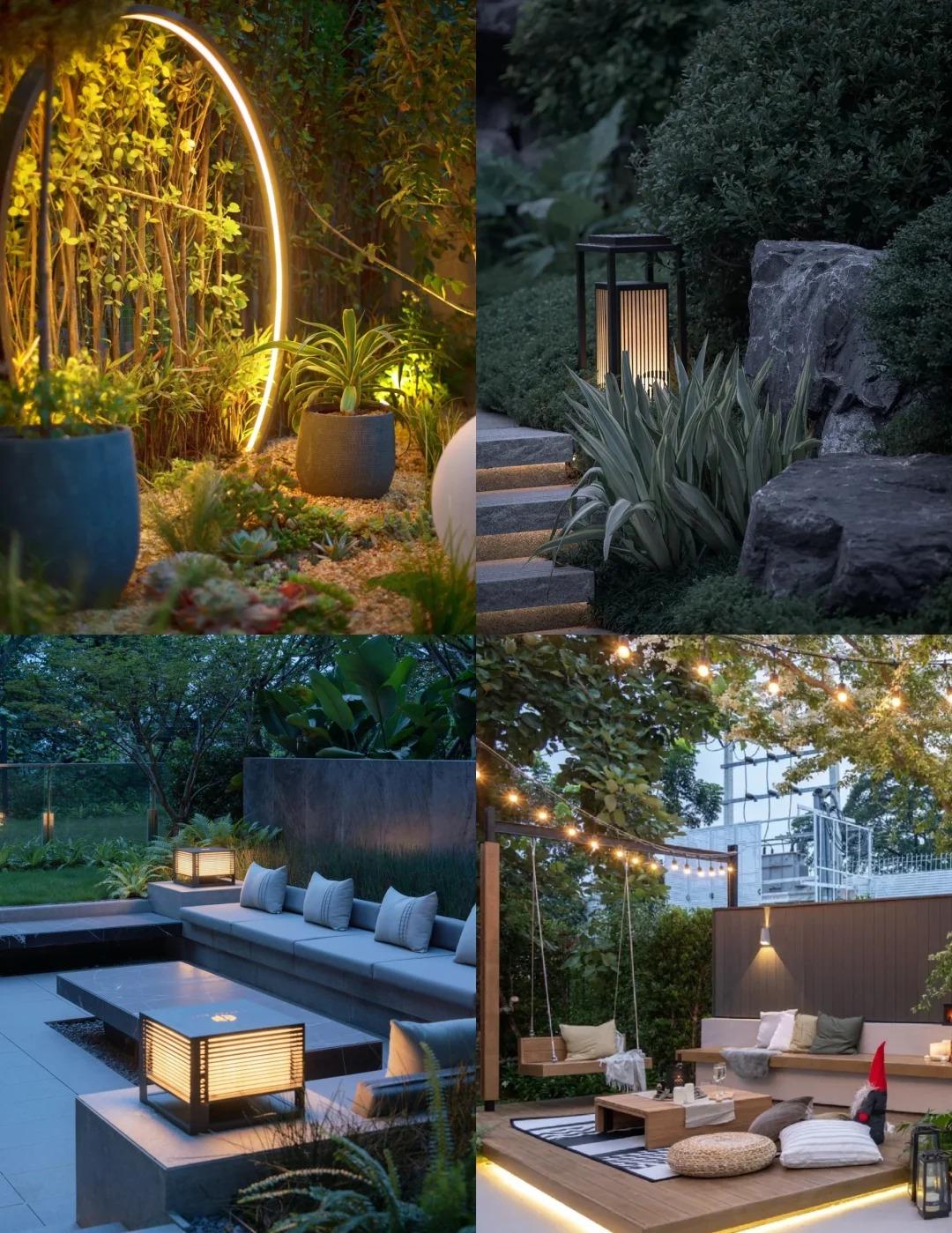
IV. Aesthetic & Atmosphere Creation Techniques
4.1 Light & Shadow Artistry
l Silhouette Effects: 1.5× height projectors behind bamboo screens
l Reflection Lighting: Utilize 0.7-0.9 water reflectivity with 3× width ratios
l Gradient Lighting: Tunable 2700K→4000K LED modules .
4.2 Plant Lighting Methods
l Flood Lighting: 0.5m elevation, 120° beam for shrubs
l Spot Lighting: 45° elevation for tree canopies (15° narrow-beam for tall trees)
l Backlighting: 1.5m elevation for leaf texture enhancement .
4.3 Architectural Integration
l Material Harmony: Stone structures pair with bronze fixtures; wood buildings use faux-wood LED strips
l Proportional Balance: Fixture diameter ≤1:5 building component height (e.g., 30cm pillar → 6-10cm wall sconces)
l Color Coordination: Warm-toned buildings use 2800K; cool-toned use 4000K .
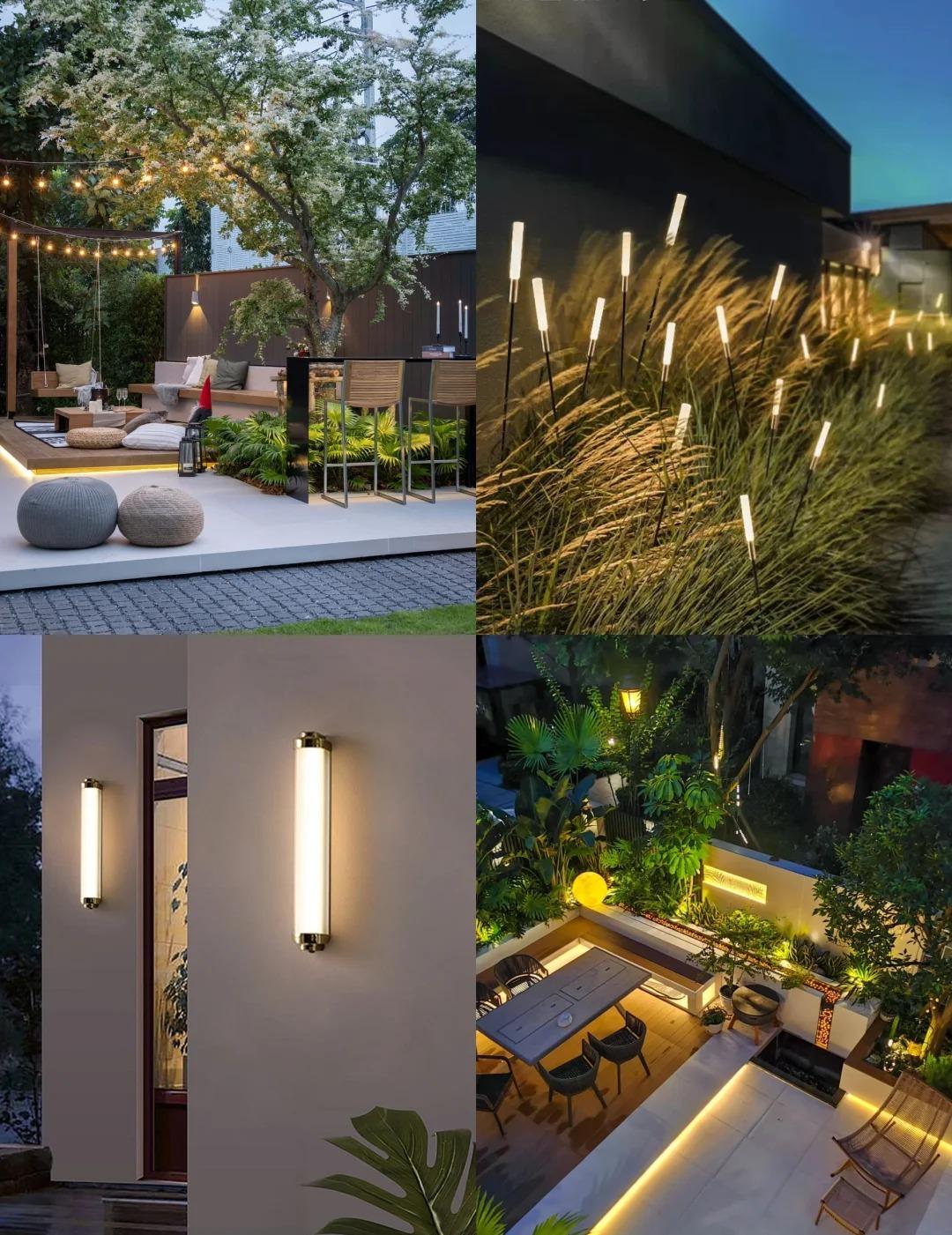
V. Sustainable Operation & Maintenance
5.1 Energy Management
l Real-time monitoring dashboards for zone-wise consumption
l Time-based dimming: 50% reduction in non-critical areas
l Annual maintenance: Quarterly optics cleaning, bi-annual LED module replacement (<30,000h lifespan) .
5.2 Ecological Impact Mitigation
l Migratory bird path monitoring to avoid light disruption
l 590nm amber LEDs (least attractive to insects)
l Spectral analysis for plant photoperiod regulation .
5.3 Smart Evolution Roadmap
l Phase 1 (2025): Basic automation
l Phase 2 (2027): Environmental response systems
l Phase 3 (2030): AI-driven scene generation platforms enable 95%+ fault prediction accuracy .
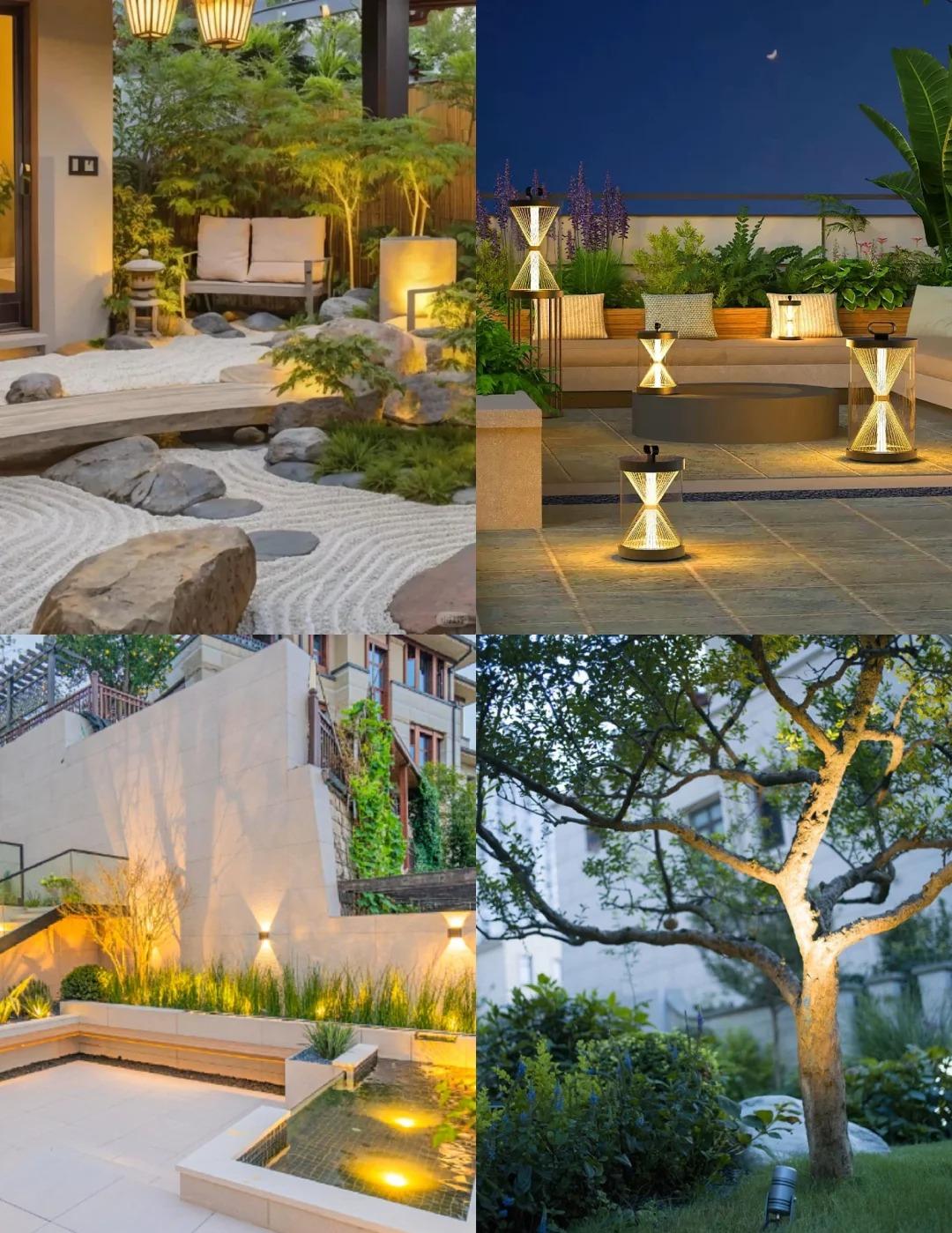
Exceptional garden lighting harmonizes technical precision with artistic expression. By balancing functional safety, ecological responsibility, and aesthetic innovation, designers transform gardens into immersive experiences where light becomes both a practical tool and a poetic medium. As Micro-LED and laser technologies mature, future gardens will transcend physical boundaries, creating multi-dimensional spatial narratives.



